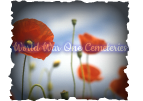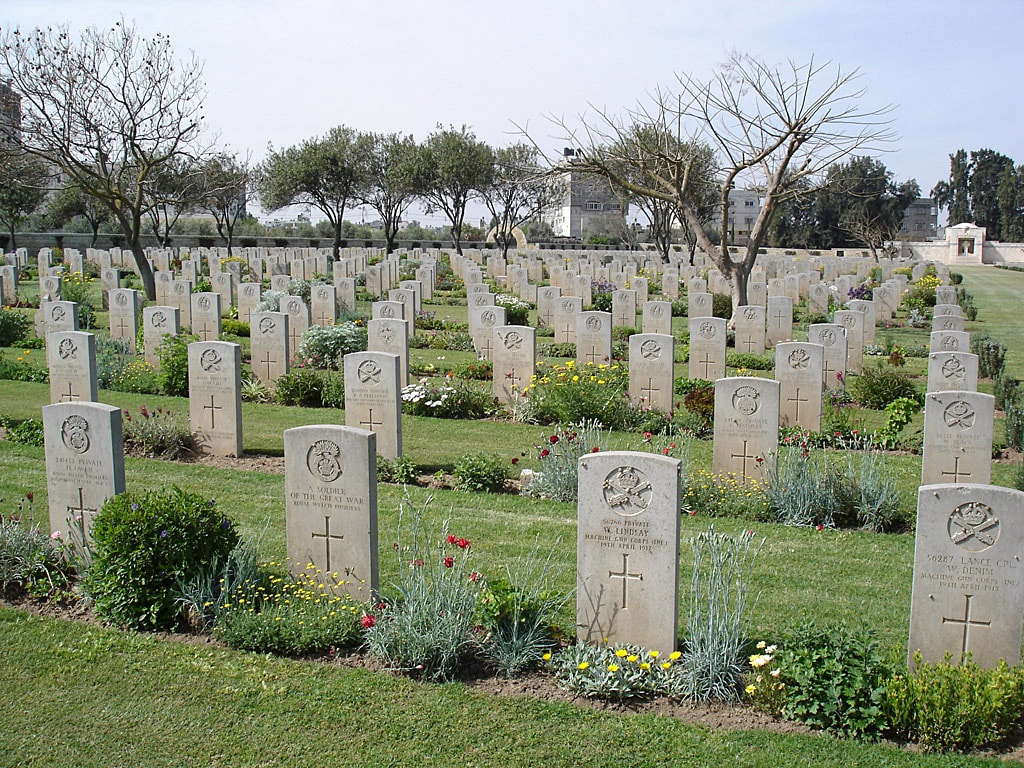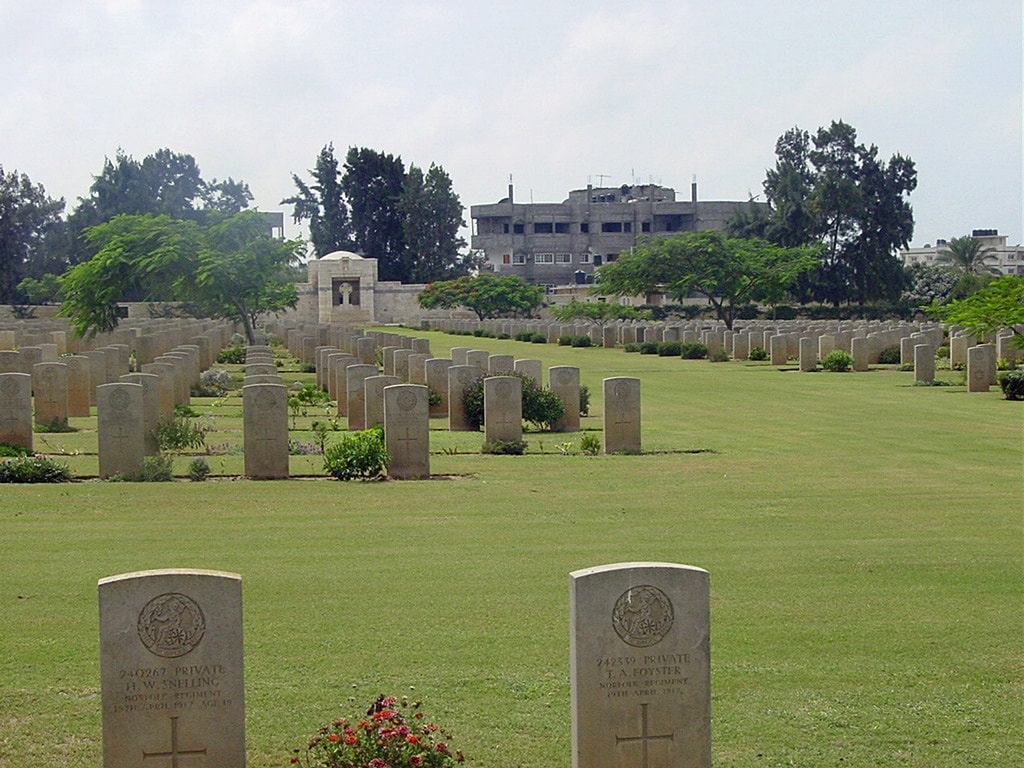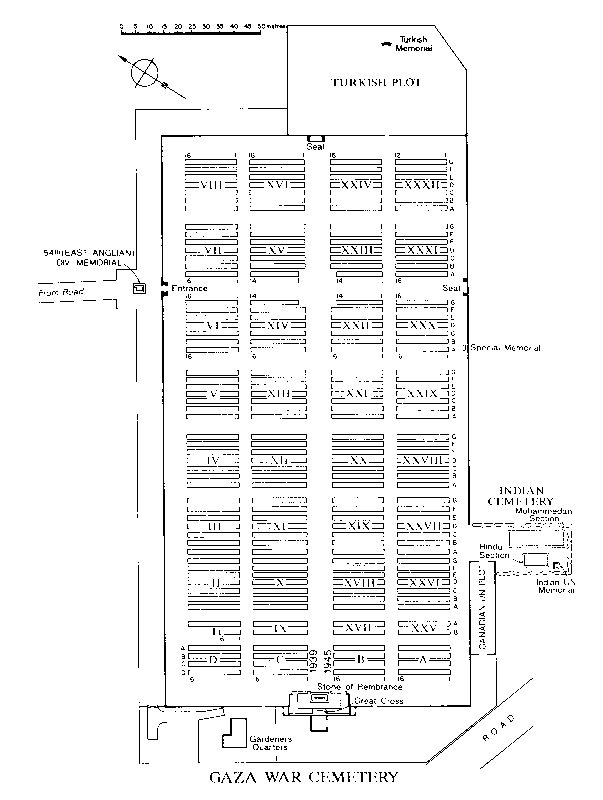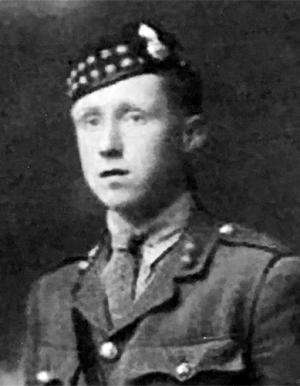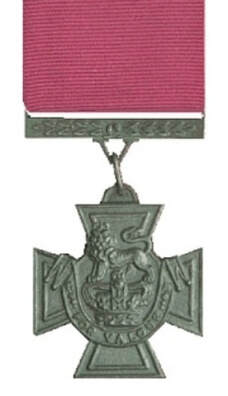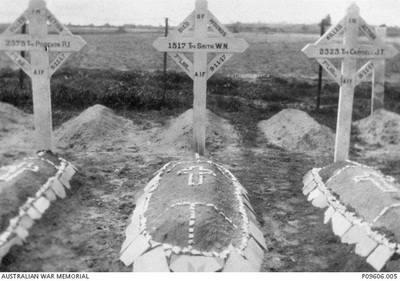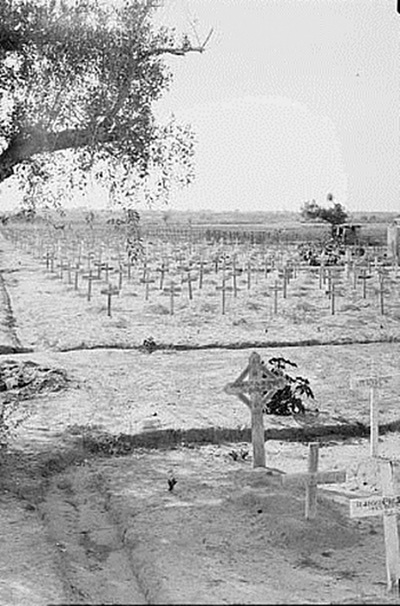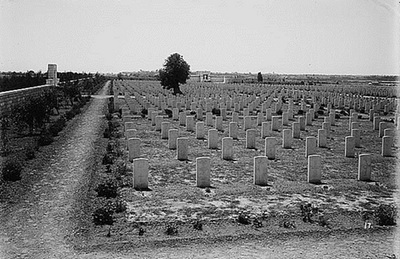GAZA WAR CEMETERY
Gaza
Israel and Palestine (including Gaza)
GPS Coordinates: Latitude: 31.51247, Longitude: 34.4821
Location Information
Gaza is 3 kilometres inland from the Mediterranean coast, 65 kilometres south-west of Tel Aviv. From Israel stop at the Erez Crossing point and enter the VIP cabin for a pass to enter Gaza. Walk through "no man's land" to the taxis on the other side. Gaza War Cemetery is 1.5 kilometres north-east of the city near the Bureir Road and 370 metres from the railway station.
The Cemetery is approximately 8 kilometres to the left of the main dual carriageway, Highway 250 through Gaza, and is about 200 metres back from the road through an avenue of trees.
Alternatively, turn left off the highway after 4 kilometres, continuing with Highway 4 until Sha'arei Aza junction and turn right, then turn right into Gaza proper, heading back towards the border. In this direction the cemetery will be found on the right hand side after approximately 3 kilometres.
Visiting Information
The cemetery is open every day from 7.00am to 3.00pm
Visitors are strongly advised to seek travel advice from their Embassy or Consulate before travelling to Gaza.
Wheelchair access possible via main entrance.
Historical Information
Gaza was bombarded by French warships in April 1915. At the end of March 1917, it was attacked and surrounded by the Egyptian Expeditionary Force in the First Battle of Gaza, but the attack was broken off when Turkish reinforcements appeared. The Second Battle of Gaza, 17-19 April, left the Turks in possession and the Third Battle of Gaza, begun on 27 October, ended with the capture of the ruined and deserted city on 7 November 1917. Casualty Clearing Stations arrived later that month and General and Stationary hospitals in 1918.
Some of the earliest burials were made by the troops that captured the city. About two-thirds of the total were brought into the cemetery from the battlefields after the Armistice. The remainder were made by medical units after the Third Battle of Gaza, or, in some cases, represent reburials from the battlefields by the troops who captured the city. Of the British Soldiers, the great majority belong to the 52nd (Lowland), the 53rd (Welsh), the 54th (East Anglian) and the 74th (Yeomanry) Divisions.
During the Second World War, Gaza was an Australian hospital base, and the AIF Headquarters were posted there. Among the military hospitals in Gaza were 2/1st Australian General Hospital, 2/6th Australian General Hospital, 8th Australian Special Hospital, and from July 1943 until May 1945, 91 British General Hospital. There was a Royal Air Force aerodrome at Gaza, which was considerably developed from 1941 onwards.
Gaza War Cemetery contains 3,217 Commonwealth burials of the First World War, 781 of them unidentified. Second World War burials number 210. There are also 30 post war burials and 234 war graves of other nationalities.
Total Burials: 3,691.
World War One Identified Casualties: United Kingdom 2,272, Australia 97, India 42, New Zealand 20, Germany 4, South Africa 4. Total 2,437.
World War Two Identified Casualties: Australia 162, United Kingdom 40, Poland 36, Greece 8, New Zealand 3, South Africa 2, Canada 1. Total 252.
Post War Burials: 30.
Images below used with the permission of the Commonwealth War Graves Commission
Second Lieutenant Stanley Henry Parry Boughey, V. C.
1st/4th Bn. Royal Scots Fusiliers
4th December 1917, aged 21.
Plot XX. A. 1.
Son of Mrs. Lucy Boughey, of Yew Tree Farm, Hurleston, Nantwich, Cheshire.
His headstone bears the inscription "The Blood Of Heroes Is The Seed To Freedom"
Citation:
An extract from the "London Gazette," dated 12th February, 1918, records the following:-"For most conspicuous bravery. When the enemy in large numbers had managed to crawl up to within 30 yards of our firing line, and with bombs and automatic rifles were keeping down the fire of our machine guns, he rushed forward alone with bombs right up to the enemy, doing great execution and causing the surrender of a party of 30. As he turned to go back for more bombs he was mortally wounded at the moment when the enemy were surrendering.
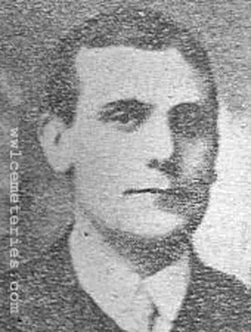
202860 Private
Harry Chadwick
1/4th Bn. Norfolk Regiment
19th April 1917.
Plot XXX. F. 14.
Lived at 35 Parkinson Street, Burnley, Lancashire.
Harry Chadwick
1/4th Bn. Norfolk Regiment
19th April 1917.
Plot XXX. F. 14.
Lived at 35 Parkinson Street, Burnley, Lancashire.
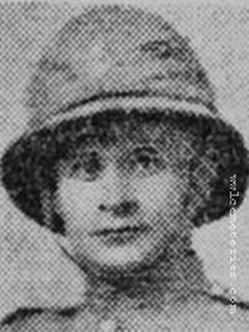
61766 Private
G. W. Davies
2nd/1st East Anglian Field Amb, Royal Army Medical Corps
20th July 1917, aged 31.
Plot VII. G. 3.
Son of William and Martha Davies, of Bryn Hywel, Efailwen, Clynderwen; husband of Margaret Elizabeth Davies, of 29, King Edward St., Blarngarw, Glam.
His headstone bears the inscription "Greater Love Hath No Man He Gave his Life For His Friends"
G. W. Davies
2nd/1st East Anglian Field Amb, Royal Army Medical Corps
20th July 1917, aged 31.
Plot VII. G. 3.
Son of William and Martha Davies, of Bryn Hywel, Efailwen, Clynderwen; husband of Margaret Elizabeth Davies, of 29, King Edward St., Blarngarw, Glam.
His headstone bears the inscription "Greater Love Hath No Man He Gave his Life For His Friends"
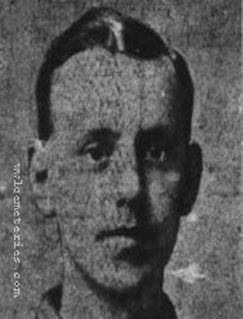
104658 Private
Fred Dewhurst
2nd/1st East Anglian Field Amb, Royal Army Medical Corps
20th July 1917, aged 27.
Plot VII. G. 2.
Son of John and Elizabeth Dewhurst, of Nelson, Lancs.
Fred Dewhurst
2nd/1st East Anglian Field Amb, Royal Army Medical Corps
20th July 1917, aged 27.
Plot VII. G. 2.
Son of John and Elizabeth Dewhurst, of Nelson, Lancs.
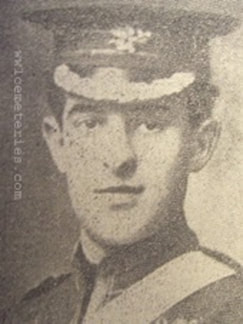
203177 Private
Arthur Jackson
1/4th Bn. Royal Scots Fusiliers, Formerly 11056 East Lancs and 28796 Liverpools
19th April 1917.
Plot VI. B. 9.
Lived at 4 Emily Street, Burnley, Lancashire
Arthur Jackson
1/4th Bn. Royal Scots Fusiliers, Formerly 11056 East Lancs and 28796 Liverpools
19th April 1917.
Plot VI. B. 9.
Lived at 4 Emily Street, Burnley, Lancashire
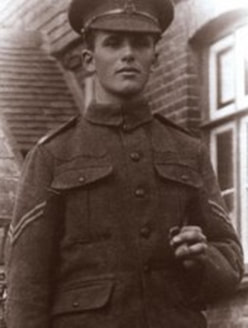
205051 Corporal
George Francis Perkins
1st/1st Bn. Royal Buckinghamshire Hussars
14th November 1917, aged 25.
Plot X. E. 10.
Husband of Margaret Nellie Perkins, of Myrtle Cottage, Terriers, High Wycombe, Bucks. Born at Terriers, High Wycombe, Bucks.
His headstone bears the inscription "Rest In Peace"
Image courtesy of great grandson, Christian Perkins
George Francis Perkins
1st/1st Bn. Royal Buckinghamshire Hussars
14th November 1917, aged 25.
Plot X. E. 10.
Husband of Margaret Nellie Perkins, of Myrtle Cottage, Terriers, High Wycombe, Bucks. Born at Terriers, High Wycombe, Bucks.
His headstone bears the inscription "Rest In Peace"
Image courtesy of great grandson, Christian Perkins
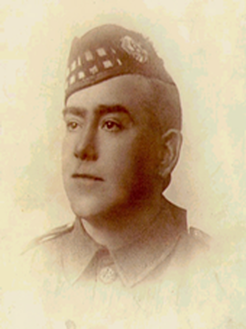
45916 Private
Archibald McNaught Stevenson
1st & 4th Bn., Royal Scots
2nd November 1917.
Plot XXVI. A. 16.
Remembered by his Granddaughter, Mary Anne Stevenson from Fremantle, Western Australia
Archibald McNaught Stevenson
1st & 4th Bn., Royal Scots
2nd November 1917.
Plot XXVI. A. 16.
Remembered by his Granddaughter, Mary Anne Stevenson from Fremantle, Western Australia
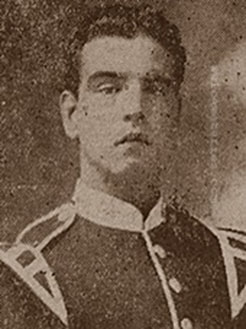
208859Lance/Corporal
Edward Swainston
Royal Engineers W Corps Signal Coy. Formerly Border Regiment
Killed by lightning on 12th November 1917, aged 22.
Plot XXV. A. 7.
Lived at 11 Charlotte Street, Burnley, Lancashire.
Edward Swainston
Royal Engineers W Corps Signal Coy. Formerly Border Regiment
Killed by lightning on 12th November 1917, aged 22.
Plot XXV. A. 7.
Lived at 11 Charlotte Street, Burnley, Lancashire.
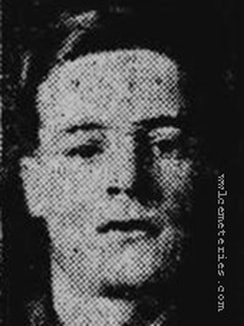
200236 Private
Percy Thurlow
1st/5th Bn. Bedfordshire Regiment
20th July 1917.
Plot XXX. A. 4.
Percy Thurlow
1st/5th Bn. Bedfordshire Regiment
20th July 1917.
Plot XXX. A. 4.
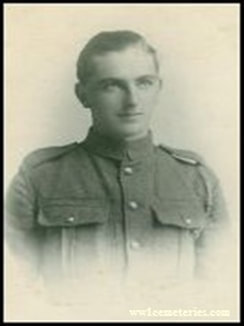
451235 Rifleman
Robert Wale
11th Bn. London Regiment (Finsbury Rifles)
19th April 1917.
Plot XIV. E. 12.
My Father (Charles Gray) was always very conscious that he had been lucky enough to survive while Robert his great friend with whom he had farmed in Devon and enjoyed village events was killed.
Remembered by the daughter of Charles Gray, Doreen Weeks.
Robert Wale
11th Bn. London Regiment (Finsbury Rifles)
19th April 1917.
Plot XIV. E. 12.
My Father (Charles Gray) was always very conscious that he had been lucky enough to survive while Robert his great friend with whom he had farmed in Devon and enjoyed village events was killed.
Remembered by the daughter of Charles Gray, Doreen Weeks.
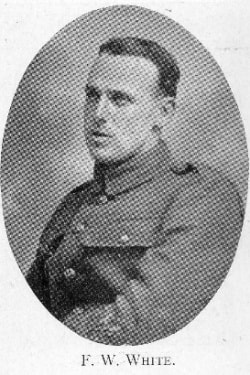
355257 Private
Frederick William White
25th (Montgomeryshire And Welsh Yeomanry) Bn. Royal Welsh Fusiliers
21st April 1917, aged 30.
Plot XXVI. D. 11.
Son of Robert and Annie White, of Chirbury, Salop.
The information below supplied by 'The Ellesmerian Club', the alumni organisation for Ellesmere College where Frederick was a pupil.
Frederick William White
25th (Montgomeryshire And Welsh Yeomanry) Bn. Royal Welsh Fusiliers
21st April 1917, aged 30.
Plot XXVI. D. 11.
Son of Robert and Annie White, of Chirbury, Salop.
The information below supplied by 'The Ellesmerian Club', the alumni organisation for Ellesmere College where Frederick was a pupil.
Frederick William White was at Ellesmere College for only one year. He joined the ‘Edward’ dormitory in May 1902 and left in April the following year.
He represented his dormitory in the rugby final in 1902 against the ‘Harold’ as wing-forward but was on the losing side.
He was the youngest son of Robert and Annie White, born on 26th July 1887. After a short spell in Walton-on-the-Hill, Lancashire where Frederick was born, the family moved to Chirbury, Montgomeryshire and the stewardship of the Herbert Arms Hotel. The 1901 Census returns also show that Robert was a farmer.
When he left Ellesmere, Frederick most likely went to work for his living as he was fifteen years old, but he makes no obvious appearance in the 1911 Census.
He enlisted at Welshpool on 7th September 1914 and stated that his occupation was a ‘draughtsman’. Private White, Service No: 2370, was posted on 7th October to “D” Squadron of the 1st Battalion, the Montgomery Yeomanry which was to become the 25th Battalion, the Royal Welsh Fusiliers. In March 1916 the battalion sailed for the Middle East and in May it was attached to 6th Company, the Imperial Camel Corps. In March 1917 it merged with the 1/1st Welsh Horse to form the 25th (Montgomery and Welsh Horse Yeomanry) Battalion, the Royal Welsh Fusiliers. Frederick was now a Corporal (Service No: 355257) having been promoted on 25th May 1916. Unfortunately, on 2nd February 1917, he was admitted to the 54th Casualty Clearing Station with septic tonsils and lost his stripes.
The Imperial Camel Corps, which was formed eventually into four battalions (one from England and New Zealand and two from Australia) and attached to the Egyptian Expeditionary Force, fought in several campaigns and suffered severe losses, particularly at Gaza.
In March 1917 the British had fought their way into Gaza. The British commanders, however, who were some distance in the rear, received reports that Turkish reinforcements were on the way and, despite the fact the Turkish defenders of Gaza were on the point of surrendering, withdrew. When the second battle for Gaza began on 7th April the element of surprise had been lost and after two days of heavy fighting no gains had been made and the battle was abandoned. Six thousand men had been lost, one of whom was Frederick, who was killed on 21st April 1917.
Frederick was buried at the Gaza War Cemetery, also the final resting place of John Frederick Woodall who was admitted to Ellesmere in September 1912. He was awarded the British War Medal and the Victory Medal.
He represented his dormitory in the rugby final in 1902 against the ‘Harold’ as wing-forward but was on the losing side.
He was the youngest son of Robert and Annie White, born on 26th July 1887. After a short spell in Walton-on-the-Hill, Lancashire where Frederick was born, the family moved to Chirbury, Montgomeryshire and the stewardship of the Herbert Arms Hotel. The 1901 Census returns also show that Robert was a farmer.
When he left Ellesmere, Frederick most likely went to work for his living as he was fifteen years old, but he makes no obvious appearance in the 1911 Census.
He enlisted at Welshpool on 7th September 1914 and stated that his occupation was a ‘draughtsman’. Private White, Service No: 2370, was posted on 7th October to “D” Squadron of the 1st Battalion, the Montgomery Yeomanry which was to become the 25th Battalion, the Royal Welsh Fusiliers. In March 1916 the battalion sailed for the Middle East and in May it was attached to 6th Company, the Imperial Camel Corps. In March 1917 it merged with the 1/1st Welsh Horse to form the 25th (Montgomery and Welsh Horse Yeomanry) Battalion, the Royal Welsh Fusiliers. Frederick was now a Corporal (Service No: 355257) having been promoted on 25th May 1916. Unfortunately, on 2nd February 1917, he was admitted to the 54th Casualty Clearing Station with septic tonsils and lost his stripes.
The Imperial Camel Corps, which was formed eventually into four battalions (one from England and New Zealand and two from Australia) and attached to the Egyptian Expeditionary Force, fought in several campaigns and suffered severe losses, particularly at Gaza.
In March 1917 the British had fought their way into Gaza. The British commanders, however, who were some distance in the rear, received reports that Turkish reinforcements were on the way and, despite the fact the Turkish defenders of Gaza were on the point of surrendering, withdrew. When the second battle for Gaza began on 7th April the element of surprise had been lost and after two days of heavy fighting no gains had been made and the battle was abandoned. Six thousand men had been lost, one of whom was Frederick, who was killed on 21st April 1917.
Frederick was buried at the Gaza War Cemetery, also the final resting place of John Frederick Woodall who was admitted to Ellesmere in September 1912. He was awarded the British War Medal and the Victory Medal.
